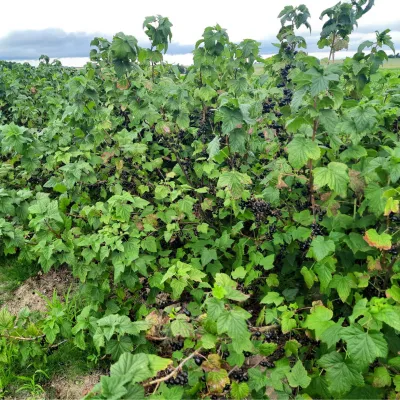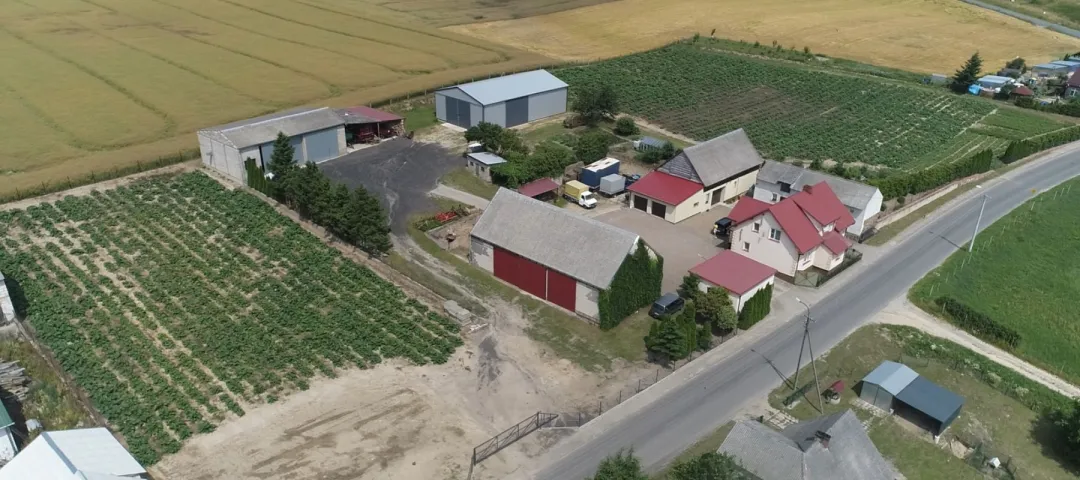General information
Beneficiary type
- Young farmer
CAP specific objective
- SO7. Structural change and generational renewal
Intervention type
- Art. 75 – INSTAL
Summary
Patryk Piszczek is a young farmer who took over his family's 24-hectare farm in the village of Przyrowa, Kuyavian-Pomeranian Voivodeship. He primarily cultivates black and red currants and rhubarb, while also growing cereals in rotation with potatoes. With costs continually rising, Patryk’s main goal was to boost his farm’s profits by expanding the area dedicated to currant cultivation - the farm’s most profitable crop - and scaling up their production. CAP funds helped him towards this goal by enabling the purchase of a new combine harvester and trailer.
Results
- The new machinery has significantly improved work, reduced costs, and has created the possibility of better and more effective management of the whole cultivation process.
- All work can be performed more efficiently and in a more controlled manner, which makes it easier to schedule delivery dates with buyers.

Promoter
Patryk Piszczek
Funding
Total budget: 218 694 (PLN)
CSP support: 200 000 (PLN)
Private/own: 18 694 (PLN)
Context
Patryk Piszczek owns a 24-hectare (ha) farm in the village of Przyrowa, in the Gostycyn commune of the Kuyavian-Pomeranian Voivodeship. Patryk took over the farm from his parents, who had been running it since 1991. The farm’s soil is of variable quality, so while he grows cereals in rotation with potatoes on the less fertile land, he uses the fertile areas to grow more profitable crops of black and red currants and rhubarb.
The basic problem of his business is profitability. As costs continually increase, one of the most viable routes to increasing profits is to reduce the production cost per unit by expanding cultivation and scaling production on established areas.
Increasing the area of the farm through the purchase of additional agricultural land is very expensive and, considering the limited amount of land that is actually available for sale in the Kuyavian-Pomeranian Voivodeship, this option is almost impossible for Patryk.
He therefore decided to focus on the plants that generate the highest profits (currants), setting out a plan to increase the area/density of their production through the introduction of additional currant bushes and the acquisition of more precise cultivation and harvesting equipment.
Objectives
The objective of the project was to increase the area of black and red currant cultivation; reduce the production cost per unit; increase sales and, ultimately, boost the farm's income.
Activities
The project financed the purchase of two new machines:
- a modern and highly effective ‘JOANNA-5’ combine harvester (from Polish company Weremczuk) for harvesting currants and other fruits.
- a ‘PRONAR T671’ trailer with a load capacity of 5 tons, suitable for work on a plantation area of 6 ha (Patryk’s target for expanding the cultivation area).
Main results
- The new machines ensure the collection of fruit from a large area, significantly reducing the number of people involved and speeding up the work.
- The ‘JOANNA-5’ combine harvester handles approx. 0.2 ha/hour and ensures almost 100% harvesting accuracy with a load capacity of up to 1 150 kg. Due to the fact that it has an adjustable shaking unit with a quiet-running head and one shaker, harvesting is faster and less damaging than manual work, and this ensures better quality produce.
- Thanks to the ‘JOANNA-5’, Patryk can potentially cultivate new crops in the future (such as gooseberries or chokeberries), because the harvester is equipped with an adjustable head for different types of bushes.
- The trailer is also so versatile that it can transport everything on the farm: rhubarb in box pallets, big bags of seed potatoes, as well as grain and potato harvests in the autumn.
- Thanks to his well-negotiated contracts with wholesale customers, Patryk has secured the sale of both edible fruit (to cold stores for the production of frozen food) and industrial fruit (to processing plants). This diversification means that the farm receives a stable source of income from the entire fruit harvest.
Key lessons
- The Young Farmer intervention has been very successful because it helps many young and first-time farmers get started. It encourages young people to stay in the countryside, and it reassures older farmers that the work will continue if they decide to hand over their farms to the next generation. Patryk believes that there should be as many opportunities as possible for young farmers not only to run their own farms but also to stay in the countryside with their entire families.
- The only negative comment concerns the application verification time, which lasted over 12 months from the moment of submitting the application to signing the contract. This is a very long time to be uncertain about whether or not a particular investment will be possible and, as technology advances, prices fluctuate and the climate changes, whether or not the right choices have been made.
The implementation of the project showed that there is potential in the development of fruit production and that there are prospects and plans for the future.
Patryk Piszczek

